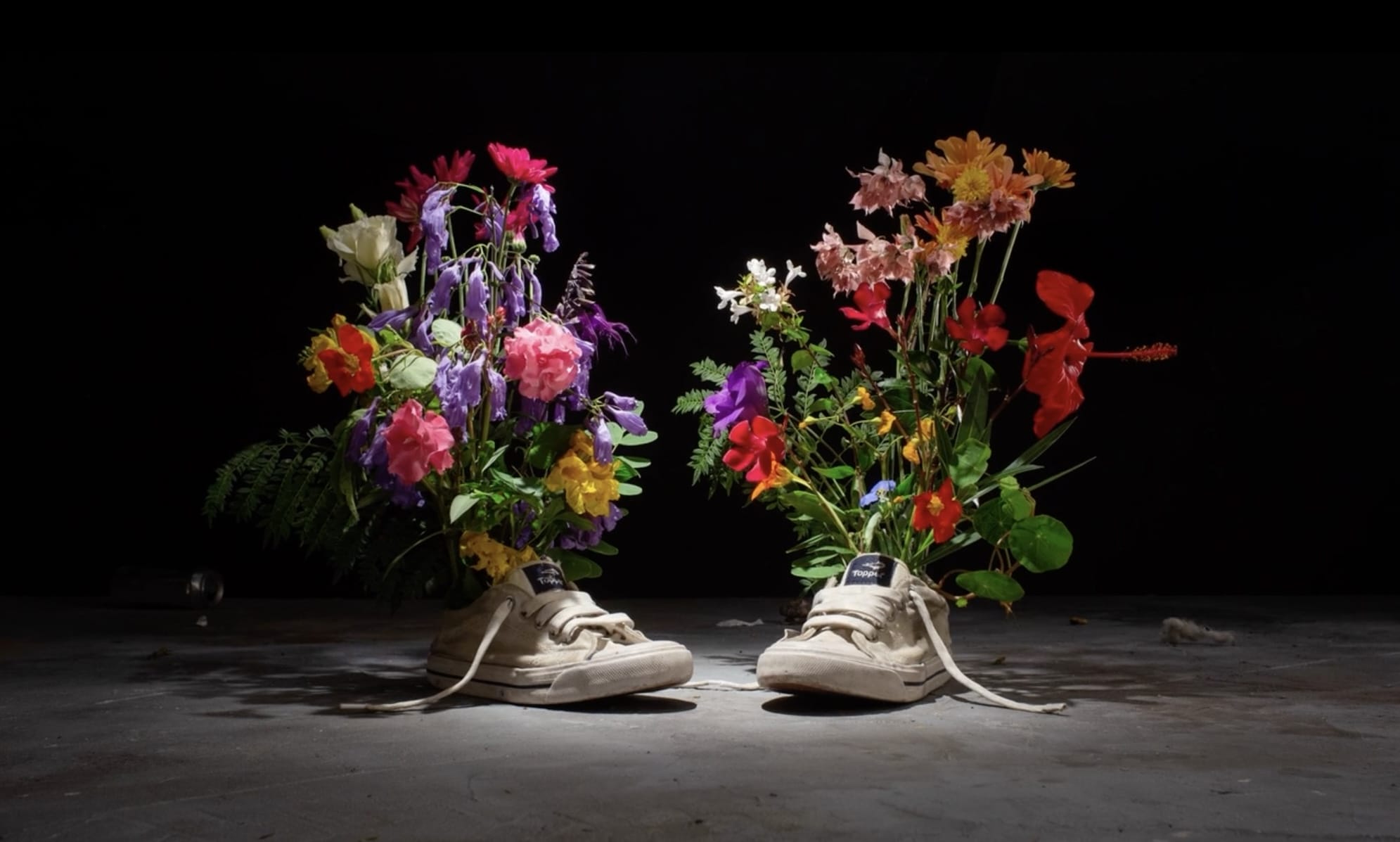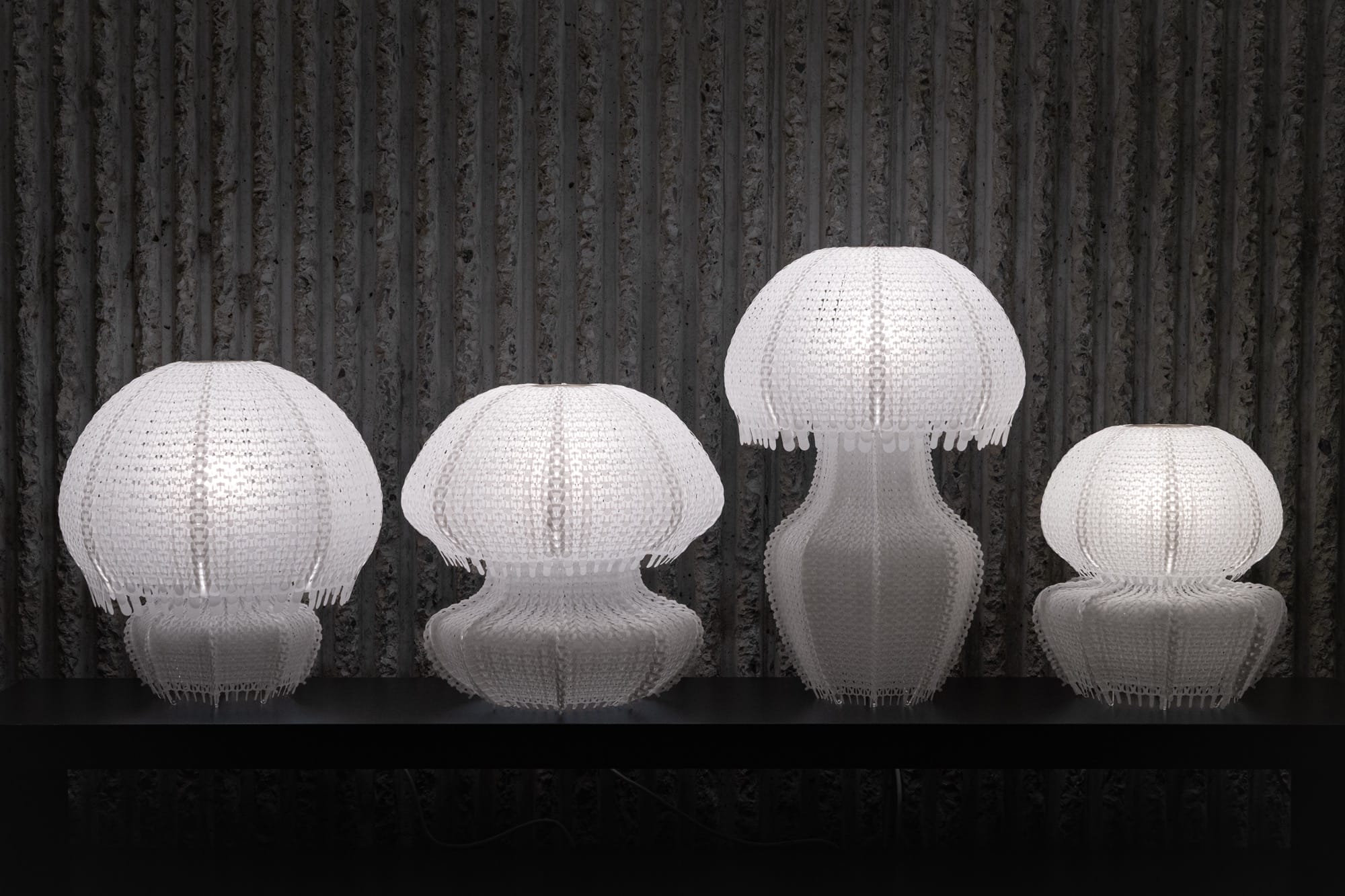“The Noah’s Ark Motive” (2023). Photos by Deniz Guzel. All images © the artist, courtesy of Carvalho Park, New York, shared with permission
The Book of Genesis, which is thought to have been written around the 5th century B.C.E. and influenced by much earlier Mesopotamian myths, contains four chapters that chronicle an earthshaking deluge. The story goes that God destroyed what he saw as a world that had become violent and corrupt, singling out one man, Noah, and instructing him to build an ark. Bringing animals to safety and a new existence, the vessel protected the chosen few from masses of water that eliminated all other living creatures on Earth.
In flowing, otherworldly oil paintings, London-based artist Yulia Iosilzon steers from depictions of stormy skies, bearded men, or monumental vessels. She proposes thinking about the flood narrative as a form of renewal and regeneration rather than a tale of destruction. Art history scholar Dr. Rebecca Birrell says in an essay about this body of work:
In a myth known for its binary thinking, its brutal and unyielding transmission of devastation, hopelessness and shame, Iosilzon imagines an alternative. Their exact narrative content remains ambiguous, but of the several open-ended possibilities contained within these paintings, all embody a courageous hopefulness, a refusal of cruelty.
Iosilzon uses transparent fabric through which we can just make out the stretcher bars as fluid gestures of oil paint draw the eye around the entire surface. Her subjects appear to spring from the flood, transforming into animals and hybridized versions of themselves. Titles like “White Transparent Frogs” and “Lobster Tail Flowers (Shellfish)” reference remarkable features of different creatures, and dots, dashes, crescents, and waves undulate around the figures as they undergo immense and dramatic metamorphoses.
Most of these works comprise part of the artist’s recent solo show Heaven’s Chambers at Carvalho Park, which represents Iosilzon in the U.S. The exhibition will be included in Anomie’s forthcoming survey, The Anomie Review of Contemporary British Painting 3, scheduled for release later this spring.
If you’re in London, you can catch her upcoming solo exhibition at Berntson Bhattacharjee, which opens on March 28. Find more on the artist’s website and Instagram.
“Abacus” (2023)
“Apples and Honey Land” (2023)
“White Transparent Frogs” (2022)
“Heaven’s Chambers, Shofar Hair” (2023)
“Lobster Tail Flowers (Shellfish)”
“Noah’s Ark” (2023)
“Shofar, Sound of Sabbath, New Moon” (2023)
Do stories and artists like this matter to you? Become a Colossal Member today and support independent arts publishing for as little as $5 per month. The article Yulia Iosilzon’s Paintings Transform an Ancient Flood Narrative Into an Elegant Observance of Renewal appeared first on Colossal.


